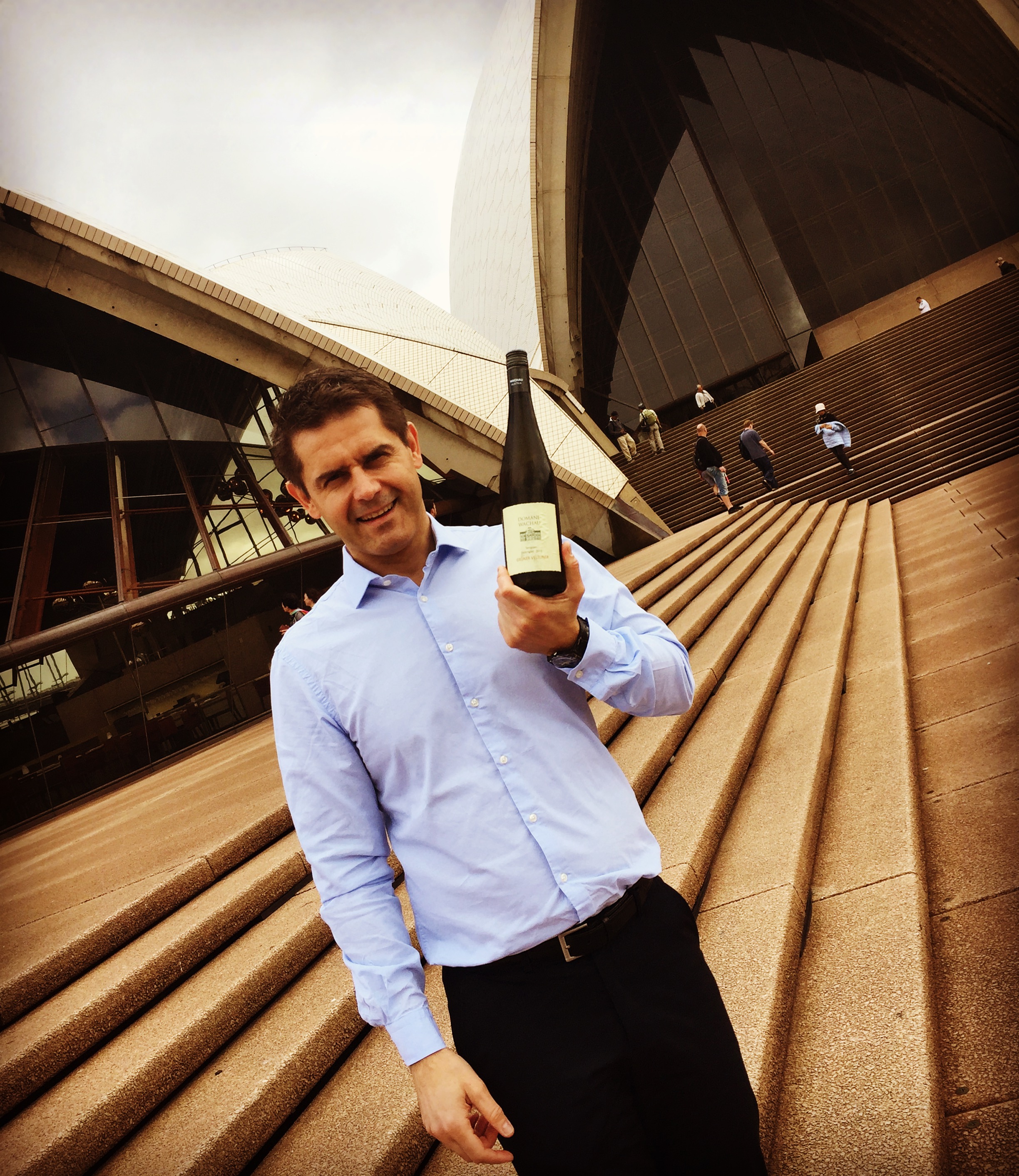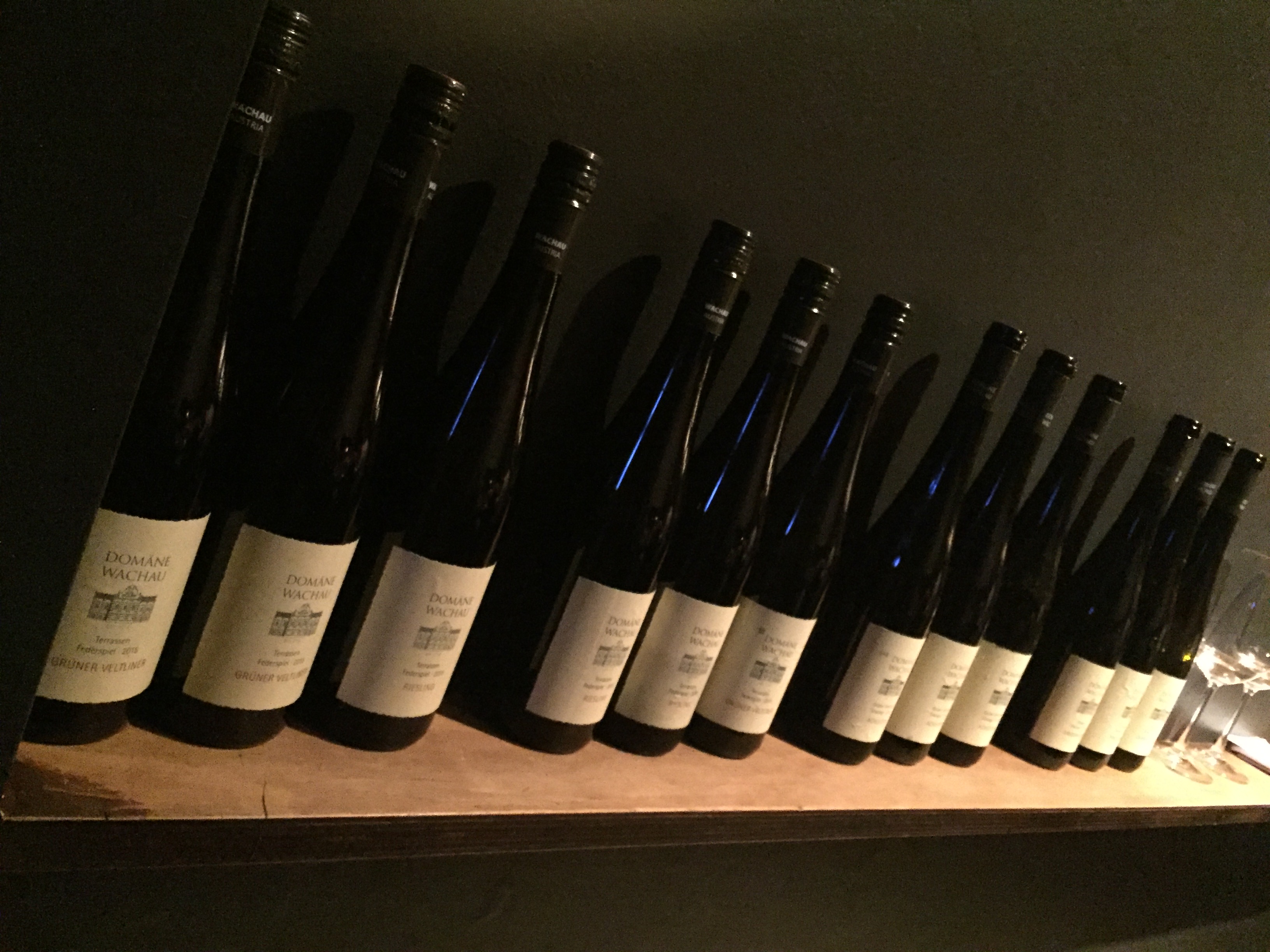
It’s been a privilege to show Roman Horvath MW around Melbourne and Sydney on something of a whistle-stop tour, squeezing in educational sessions with members of the wine trade and a few intimate public tastings.
Roman has been at the helm of Domäne Wachau since the mid-2000s, and has at his fingertips the very finest sites of Austria’s premier white-wine region. On top of that, as Austria’s second Master of Wine, he gives crystal-clear context to these wines. (His mate Andreas Wickhoff MW of Bründlmayer, who visited recently, was #3!)
Roman found time to sit down and chat with CellarHand’s Ed Merrison, and it’s a must-read for anyone with an interest in Riesling and Grüner Veltliner from this underrated but en vogue wine-producing nation.
CellarHand: What are the key geographical features of the Wachau, and how do these influence the growing of grapes there?
Roman Horvath MW: It’s an extremely cool, marginal climate that imbues elegance and finesse. Steep terraced hillside vineyards are the foundation for extremely low yields that guarantee structure and depth.
CH: How would you describe the typical features of Grüner Veltliner from the Wachau?
RH: Grüner Veltliner is the main variety in our winery, making up around 70%. In the vineyard, Grüner Veltliner is very robust – the only thing it can’t handle is lack of water. In actual fact you can plant Grüner like potatoes, even on every possible potato field. However to produce good or high-end Grüner you have to care a lot. Vineyard management is crucial. Depending on the style you can either have a medium-bodied, fresh, crystalline fruitiness of apple, grapefruit, fine spices, white pepper and fresh wild herbs. Or a full-bodied wine with hints of tobacco, exotic flavours and dried herbs. Whatever the style, you should find well-integrated refreshing acidity and good minerality.
CH: How about Riesling from the Wachau?
RH: Riesling is the second most important white wine grape for us, making up about 20%. We’re Austria’s number one Riesling producer. It grows mainly in the upper terraces because it can cope with more extreme soils and doesn’t care too much about a lack of water. Riesling has an intrinsic motivation to go for high quality; it doesn’t need that much help. Compared to Grüner it has a longer growing period. In the glass, it offers delicate citrus aromas, a juicy but tight structure and a vibrant mineral character. Riesling is also perfect for the rare, high-end botrytis wines. These wines from the Wachau are much closer to German styles than to Burgenland.
CH: What are the key differences in the sites generally favoured for planting Riesling and Grüner?
RH: Riesling in Wachau is only planted on meagre soils on the steep terraces. It isn’t planted on the valley floor on the deep soils, where you might find it in other regions in Austria. Riesling needs a good exposition and cool climate, but warmer sites. Grüner Veltliner is planted on all types of soils. Grüner suffers more from drought, as the skins thicken when the grapes go into self-preservation mode, which can give coarse phenolics and off-flavours. Of the two, Riesling is more susceptible to noble rot.

CH: What do you see as the best food pairings for Wachau Riesling and Grüner?
RH: A young Riesling Federspiel is a great aperitif. Having a BBQ at home we very often start the afternoon or evening with an aged Riesling Smaragd from the 1990s as an aperitif. Life is too short for not starting with great wines!
Grüner Veltliner Smaragd with some years of age goes perfectly with flank steak, especially if there’s a spicy sauce with it. Grüner is known as a match for notoriously difficult pairings such as salads and vegetables.
CH: People may have heard of the Wachau-specific categories of Steinfeder, Federspiel and Smaragd. What do these terms stand for?
RH: Domäne Wachau is a member of the Vinea Wachau Nobilis Districtus, the region’s protected appellation association. Members must adhere to extremely strict quality standards. Chaptalisation, an otherwise common practice in cool-climate regions, is not permitted. This preserves the unique quality profile of white wines from the Wachau. These are 100% hand-picked, 100% Wachau in origin, with no vineyard ownership outside the Wachau permitted.
The Steinfeder name itself refers to the typical “Steinfeder-gras” (Stipa pennata), a grass which grows near the vines in the Wachau’s terraced vineyards. Steinfeder is the lightest style, and most of it is consumed locally.
Federspiel is a dry wine category that excels with complexity, character, fruity elegance and an alcohol content of up to 12.5 %. These wines offer precise terroir character combined with a fresh, lively elegance. They’re delicate and yet make great food wines. The name “Federspiel” stems from falconry, a historic regional sport of the aristocracy.
Smaragd is named for the striking emerald lizard that basks in the sun on the dry stone walls of the Wachau terraces. These are dry, concentrated, complex wines of inimitable Wachau tension, a minimum alcohol content of 12.5 %, and tremendous ageing potential. Highly ripe grapes and natural flavour concentration yield complex, texture-driven wines with great depth. They’re good to drink when young, even better after three to five years and at their best between five and 10 years of age, especially from the great single-vineyard sites.
CH: What are the strengths and limitations of the Wachau classification system?
RH: We see it more as a categorisation into two styles: Federspiel and Smaragd. Steinfeder is a very local category. These names refer to different wine styles due to origin and choice of time of picking. In cool-climate wine regions, time of picking is crucial. Consumers know what they get when buying a Federspiel or a Smaragd. We are 100% Wachau, no vineyards outside of Wachau, no buying in of grapes or wine in bulk is allowed. This insistence on 100% origin is a strength but also a limitation as we face extreme fluctuations in yields and crops.
CH: Names like Kellerberg, Achleiten and Singerriedel are known the world over for the phenomenal, and distinctive, wines they produce. What do you see as the key attributes of these vineyards?
RH: The Kellerberg vineyard sits at an elevation of 220m to 300m on “Gföhler Gneiss”, which consists mainly of feldspar and quartz and, in some areas, also covered by sandy loess soil. The Pannonian climate influence yields full-bodied and complex, mineral-driven wines.
Achleiten is at 220m to 400m. On the upper terraces, gneiss is the prevailing subsoil, while the lower terraces are dominated by dark, schistous amphibolites. Wines from here have an extreme, inimitable mineral character. The single vineyards have great aging potential but Achleiten in particular shows incredibly complex aromas when it’s aged.
Then you have Singerriedel, which is a great Riesling vineyard in the western, cooler part of Wachau. Late picking ensures complex wines. Without botrytis you get extremely focused, precise, saline Rieslings.
CH: Domäne Wachau is often referred to as Europe’s finest co-operative winery. What is exactly is the set-up of the estate?
RH: Teamwork is the very essence of the winery: 250 small-scaled Wachau vintner families cultivate the steep, terraced vineyards in every renowned single vineyard of the region. They grow grapes on prime vineyard sites and work side-by-side with the team from Domäne Wachau. One of the most important factors is a quality program in the vineyards. It was launched in 2005 and has been essential for the winery’s current success.
Our special advantage is the fact that our family vintners pick by hand only and have owned their vineyards for generations. This generations-old knowledge on each individual small parcel is so important to us. Ownership is very small on average with 250 family vintners on 440 hectares. In total we work on about 2,000 small parcels all over Wachau.
CH: When you’re not drinking Wachau Riesling and Grüner, what other Austrian wines do you like to drink?
RH: Grüner Veltliner from Kamptal, sometimes Wagram. I drink red wine very rarely, and that would mainly be elegant, “new-style” Blaufränkisch. However, next to Wachau I drink mostly white Burgundy and Chardonnay from California. I’d like to drink more Chardonnay from Australia, but unfortunately we tend to only get the basic stuff in Austria!